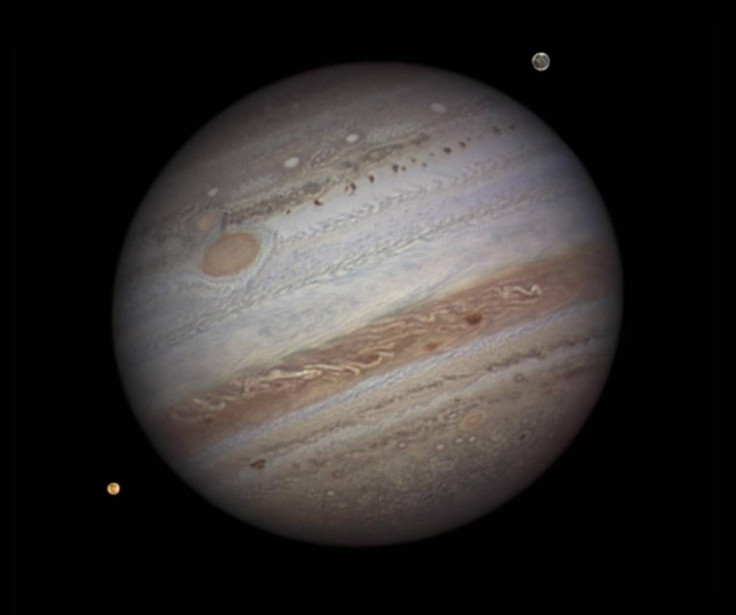Lava waves on Io: Jupiter's volcano moon seen in unprecedented detail thanks to rare planet alignment
Lava lake Loki Patera on Io is the most volcanic site in the entire solar system.

Jupiter's moon Io is home to the most powerful persistently active volcanic site in the entire solar system. Known as Loki Patera, this active lava lake has now been mapped in unprecedented details, allowing scientists to gain a better understanding of Io's complex volcanic processes.
The study, published in the journal Nature, is based on the scientists' observations of the moon with the Large Binocular Telescope located in the mountains of Arizona.
The scientists took advantage of a rare orbital alignment between Jupiter and its two moons Io and Europa in March 2015. They were able to isolate the heat coming from volcanoes on Io's surface and to come up with high-res maps of Loki Patera.
"Loki was covered from one direction but revealed from another, just the arrangement we needed to make a real map of the distribution of warm surface within the patera", study co-author Michael Skrutskie, of the University of Virginia commented.
What is happening in Io
Scientists have wanted to learn more about Loki Patera and more generally, about volcanic processes on Io, for years.
"Io is enormously volcanically active, which seems completely out of character considering its size and what his history should have been. Just because it is unique, it is important to understand what is going on", Lionel Wilson, an Emeritus Professor at the University of Lancaster who was not involved with this study, told IBTimes UK.
"The fact it's so active also shows us what very voluminous eruptions would look like on other rocky planets. We have not seen a large eruption of this kind on Earth in the whole of human history, but they happened in the distant past and they are happening on Io – so we might as well try to understand what goes on and what the consequences are".
The scientific community has long disagreed on whether the brightening at Loki Patera on Io – which occurs every 400 to 600 days – is due to overturning lava in the massive lava lake, or to periodic eruptions that spread lava flows over a large surface.

This study brings new data to fuel the debate. The images analysed by the scientists show that the surface temperature of the lava lake increases from one end to another.
Their observations suggest that the lava in the lake episodically overturns in two waves that propagate and converge around a cold island in the middle of Loki Patera.
"This is the first useful map of the entire patera," said co-author Ashley Davies, of the Jet Propulsion Laboratory in Pasadena. "It shows not one but two resurfacing waves sweeping around the patera. This is much more complex than what was previously thought".
But the origin of these two waves still remain unclear.
"This is a very interesting research, with good data, but it still does not completely resolve the issue of what is happening here. If these waves are an eruption, then it may be telling us that eruptions happen systematically every couple of years. That has to be tied in some way to the details of how this melting is happening deep in the interior of Io", Wilson pointed out.
"If it is a foundering lava lake, something must have triggered the pattern and we need to find out what."
© Copyright IBTimes 2025. All rights reserved.






















